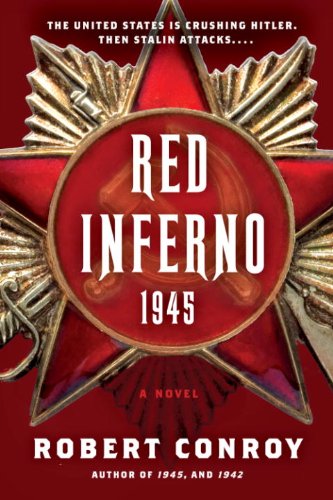Red Inferno: 1945
The many and varied “what ifs” of military history play a central role in many readers’ interest in the battles and campaign accounts. Historical novelists such as Robert Conroy, Harry Turtledove, and Newt Gingrich are three of the better known in this steadily popular genre. Conroy has published 1862, 1901, 1942, and 1945, and here offers Red Inferno: 1945 as, in many ways, a supplement to the earlier 1945. The setting is a crumbling Germany toward war’s end. Erstwhile allies Russia and the United States cast suspicious eyes on one another as the occupation of a defeated Germany assumes center stage. Angered at Stalin’s apparent duplicity, Harry Truman sends U.S. combat units on the road to Berlin. This unexpected attack results in a near disaster for American forces in the Potsdam sector. Military action is influenced by political uncertainty as the White House finds itself frustrated by British and French opposition, as well as by a Washington beset by political intrigue and double dealing. Conroy is well practiced in his blending of the larger than life actual participants (chiefly Truman, Stalin, Eisenhower, Bradley, and J. Edgar Hoover) with the fictional (Steve Burke, Jack Logan, Wolfgang von Schumann, Natalie Holt, and Sergei Suslov are by far the most interesting). While the story seems eminently predictable, Conroy is a skilled enough practitioner to keep you turning the pages as the events move to answer the “what ifs.”










